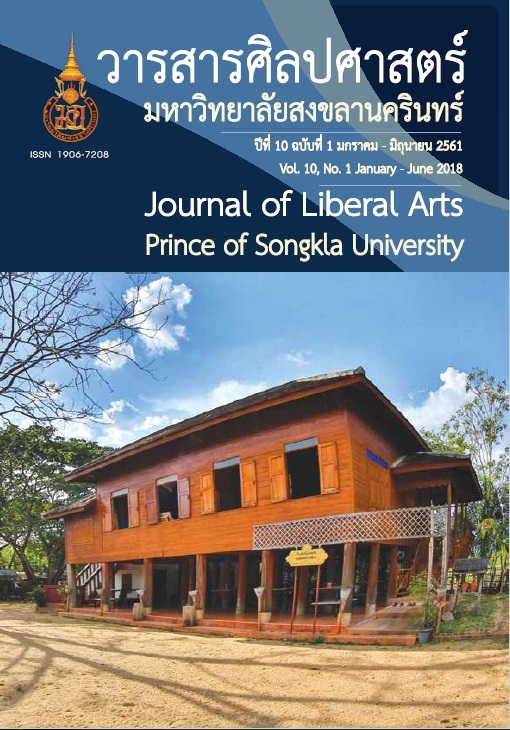Creating political ideology by using rice metaphors in Khmer proverbs
Keywords:
Political ideology, rice, conceptual metaphor, Khmer proverbsAbstract
The purpose of this article is to examine some concepts from the use of “rice” metaphors in Khmer proverbs and the political use of these concepts. From the study, it is found that not only do the Khmer regard rice as a commodity; they also compare it to human, work, money, knowledge and legacy. These concepts were used as an important tool in creating a political ideology in the era of building the country (after Cambodia gained dependence from France) as apparent in the national emblem and banknotes. In these, rice is a symbol for agriculturists, which are the majority of the nation’s population (rice beinghuman), the agriculture occupation (rice being work), which is the country’s science (rice being knowledge) passed down from generation to generation (rice being legacy), which also shows abundance, security and wealth (rice being money).
References
Heraldy of the world. (2017, March 13). National emblem of Cambodia. Retrieved From https://www.ngw.nl/heraldywiki/index.php?title=
National-Emblem-of-Cambodia.
Ministry of Education, Youth, and Sports. (2011). History Level 12. Phnom Penh: Publishing and Distribution House. [In Khmer]
Mogan. (2011, October 6). Perused some pics of coats of arms and flags of nations today. Retrieved from https://jimmorgan.word
press.com/2011/10/06/perused-some-pics-of-Coats-of-arms-and-flags-of-nations-today/.
Panpothong, N. (2013). A Linguistic approach to critical discourse analysis: Concepts and implementation of discourse studies in Thai language]. (2nded.). Bangkok: Academic dissemination project, Faculty of Arts, Chulalongkorn University. [In Thai]
Phanit, R. (2014). Conceptual metaphors of rice in Thai society. Mekong-Salween Civilization Studies Journal 5(2), 161-190. [In Thai]
Phin, S. (2011). Rice in Khmer tradition. Phnom Penh: Angkor Wat. [In Khmer]
Prach, W., et al. (2015). 100 things that you should know about Khmer. Phnom Penh: Dam Derm Civeut. [In Khmer]
Ratna, S. (2011). A history of the national flag and national anthem Nokoriat. n.p. [In Khmer]
Tedthong, U. (2005). Khmer proverbs: Ways of life and worldviews of Khmer people. (Doctoral dissertation).Graduate School, Silpakorn University.
[In Thai]
Thongdi, I. (1994). Rice culture: Rice rites and farming. Bangkok: Saha Dhamika. [In Thai]
Wikimedia commons. (2016, November 23). Emblem of democratic Kampuchea 1975-1979. Retrieved from https://commons. Wikimedia.
org/wiki/File: Emblem of Democratic Kampuchea 1975-1979.svg.
Yongbunkert, C. (2000). A Journal of Chenla’s Tradition. Bangkok: Matichon.
[In Thai]
Downloads
Published
How to Cite
Issue
Section
License
The authors retain the copyright to their article but the Journal of Liberal Arts, Prince of Songkla University reserves the exclusive rights to first publication.






